Unveil a hidden charm of
Vines Grounded in Bulgarian Soil
Discover a treasure trove of benchmark classics crafted from the finest vines, alongside memorable wines that embody the heritage of ancient indigenous roots – all available at exceptional prices. Our collection showcases an abundance of freshness, full-bodied richness, and an unwavering sense of place.
Among our wide array of wines, you’ll find internationally recognised grape varieties, such as Cabernet Sauvignon, Merlot, Sauvignon Blanc, and Chardonnay. These renowned varieties were extensively cultivated during the socialist regime and currently account for approximately 70% of the vineyards. Moreover, passionate producers are reintroducing impressive and ambitious local varieties, reminiscent of a historic period after World War I when independent wineries championed the country’s native grapes.
Bulgarian red wines reign supreme, boasting exceptional craftsmanship and astonishing affordability. Delight in the splendid flavours of Mavrud, Rubin, and Melnik. The north-western region of the country also showcases remarkable examples of Pinot Noir and Cabernet Franc.
For the discerning white wine enthusiast, the cooler north-east region offers exceptional varieties like Dimiat, Muscat, and Misket. Additionally, recent plantings of Sauvignon Blanc in the Sakar mountains hold great promise.
One of the secret to find great wines at great prices is to understand undervalued regions and grapes. Find the perfect wine bottle matching your personal taste.
an old local variety
Mavrud
- Cluster: small, semi-slender to loose, due to its different varieties, some forms are slender, winged, large and wide at the base
- Grapes: spherical, fruity and small (15.2/15mm)
- Skin: blue-black, hard with a hard wax coating, thick
- Average weight: 387 g
- Sugar content: 17-23%
- Titratable acids: 6.1 – 10.7 g/ dm3
- Late ripening variety: generally harvest is done end of October
- Yields: low to medium
- The best conditions: warm micro-regions, no danger of low winter temperatures, and deep, fresh alluvial soils
- Wines: sufficient tannins, deep ruby color, blackberry taste, pleasant aroma, acidity in reserve, freshness and sweet taste
- When in contact with oak, the wine has a deep, harmonious and delicate taste, as well as a complex but strong aroma
- These wines have a similar profile to a lightly-oaked Malbec, along with the same striking magenta-tinged rim
- Tip: quality is still somewhat variable, so read tasting notes before buying
- Variety with a long ageing potential
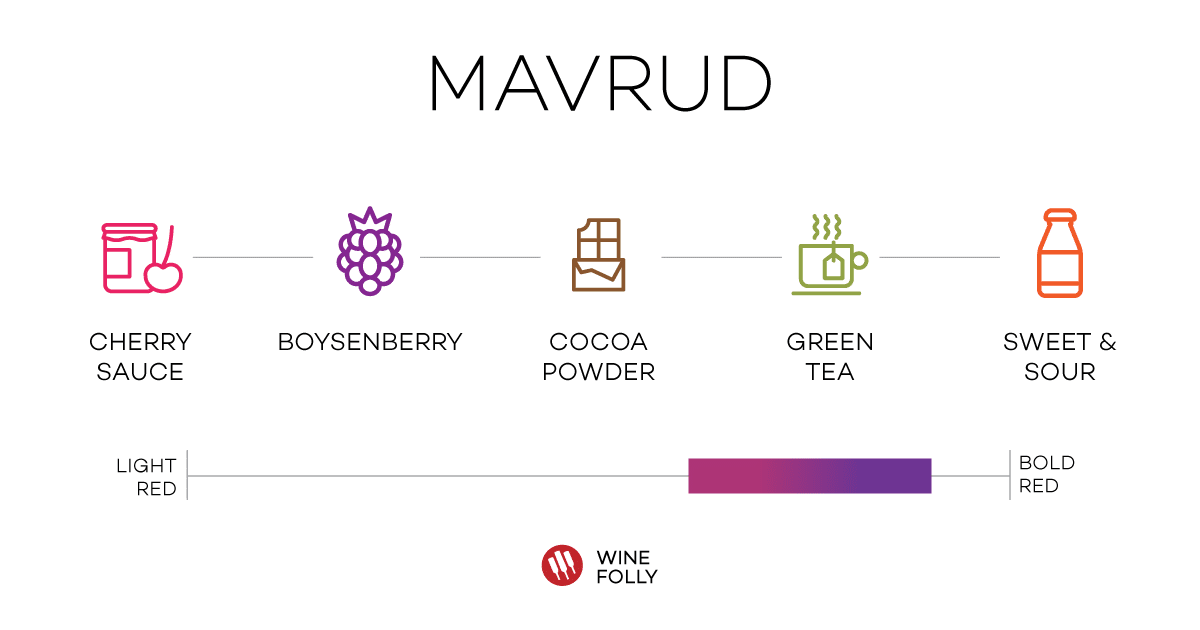
An endemic variety
Broad-leafed Melnik
- Cluster: Winged, Semi-Winged, Semi-Compact, Medium to Large (16.9/10.2cm)
- Grapes: oval, small (16/15 mm), sour in taste with a lot of juice
- Skin: blue black, tough and hard
- Sugar levels: 20-24%
- Titratable acids: 6-8g/ dm3
- Late ripening variety – the first part of October
- The best conditions:
- Wines (young): dense cherry colour, their intense flavour dominated by cherry, enough density and a typical piquant tartness.
- When mature, they have a rich, complex flavour in which one could distinguish interesting nuances of tobacco and leather; the wine taste preserves its freshness and mild tartness, complex and rich in aromas
- Good development when there is contact with oak

An endemic variety
Melnik 55
- Variety grows almost exclusively in Struma Valley in the Southwestern part of Bulgaria.
- This mountainous area delivers elegant and peppery reds with flavors of strawberry, blackberry, black pepper, mesquite and soy sauce.
- Blended wines have bold tannins with bitterness similar to green tea powder.
- Pure, single-varietal Early Melnik are much lighter in body, similar to Gamay from Beaujolais.
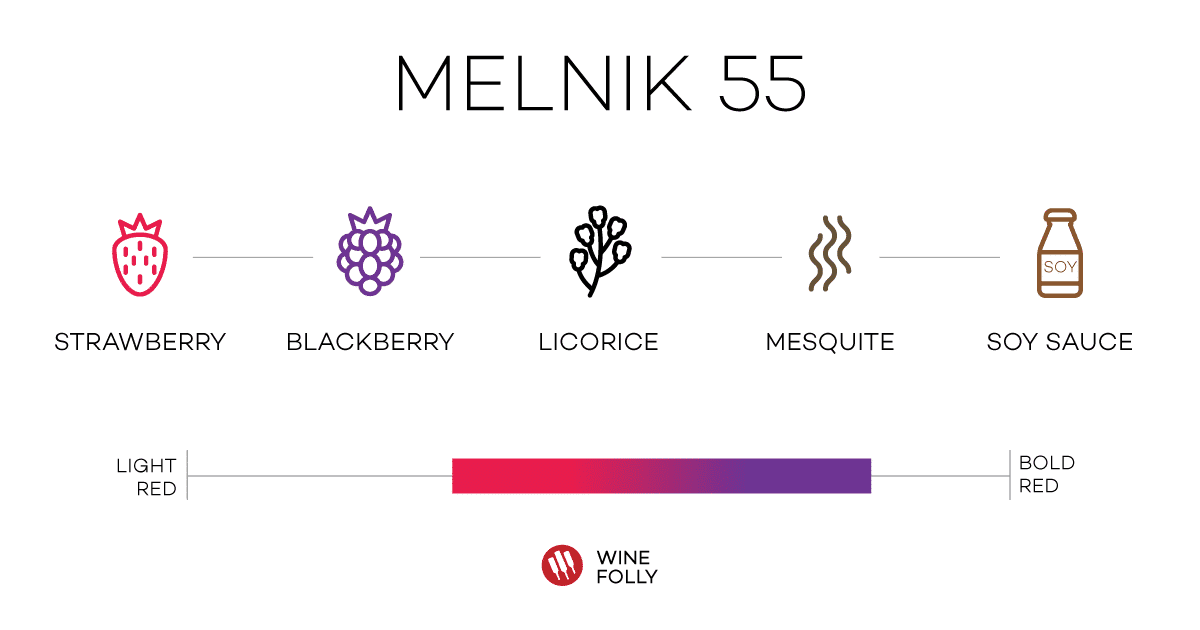
a local grape variety
Rubin
- Cluster: medium-sized (173 g), conical, semi-compact to compact, with one or two wings
- Grapes: spherical, small, blue-black, with abundant wax coating
- Skin: thin, tough, strong, resistant to cracking and rotting, rich in dyes and tannin
- Flesh: juicy and sweet, with a fresh and harmonious taste
- Sugar levels: 23-25% (28-30% when dry)
- Titratable acids:
- Early to medium ripening, first part of September
- Yields: medium
- The best conditions: hilly terrains with sufficiently deep, medium-rich soils
- Wines: intense ruby colour, improves and develops with aging
- Aromas: Unique finessed herbal aroma, plummy fruit matched with somewhat rigorous tannins
- Flavors range from sweet strawberry to blackberry, with subtle coffee and espresso-like notes
- The wine shows its best as it ages and the fruit flavors blossom as the tannin softens much like an aged Italian Nebbiolo
- Often could be find blended with Mavrud to add structure, color and body
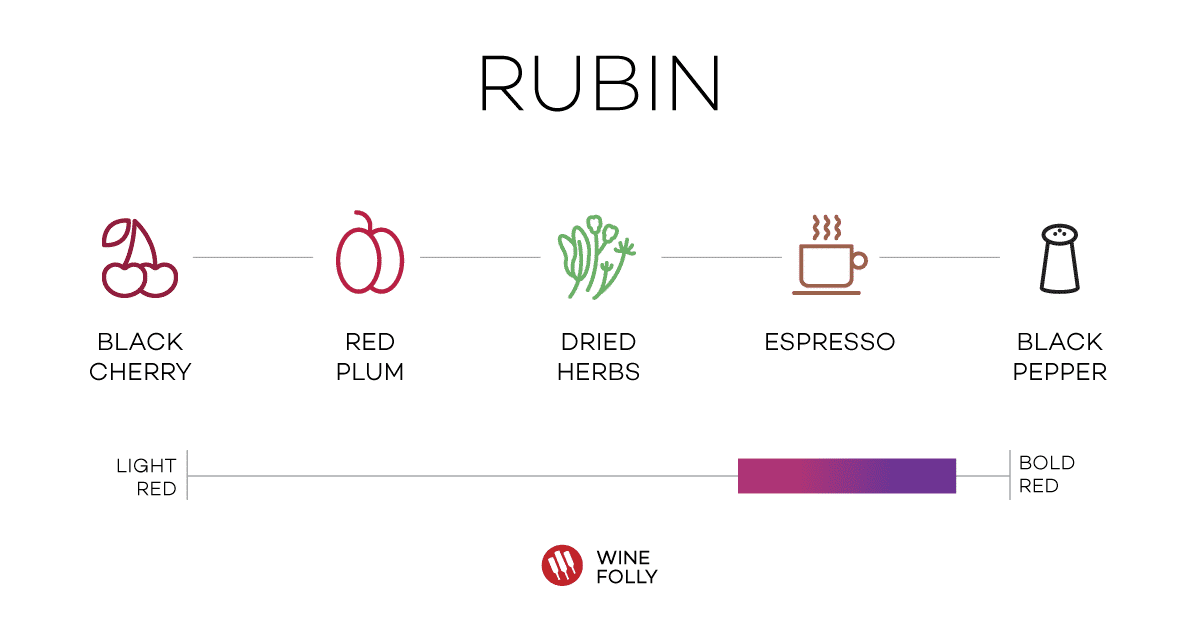
a well-known local grape variety
Gamza
- Cluster: often slender and single-branched, cylindrical-conical, large (15.4/8.2 cm), medium-sized, cylindrical-conical, compact
- Grapes: spherical, slightly (16.2/15.6 mm) deformed when bunch is slender
- Skin: dark blue and blue-black; thin with a thick wax coating,
- Yield from 1 vine: 4-6 kg.
- Sugar content: 19-21.8% at ripening, but more saturated in the North region
- Titratable acids:
- The best conditions: airy places on hills with relatively rich soils with good exposure
- Wines: bright ruby color, pleasant tannins, distinctive but slightly fresh, with a taste of small red fruits (mainly blackberry) that is fresh and lightly structured
- Relatively late ripening variety – end of September, beginning of October, but in the Vidin region – mid-September
- It should be harvested quickly and grown in hilly, windy regions with slightly drained soils
- Best when the autumn is dry and warm, and in wet conditions the skin can break and the bunches can be attacked by gray rot
- Tart berry flavors with a savory, herbal profile and a touch of black pepper and baking spice not unlike an Italian Barbera or Oregon Pinot Noir.
- Tip: because of it’s light body and high aromatics Gamza (Kadarka) is best served in a Burgundy glass.
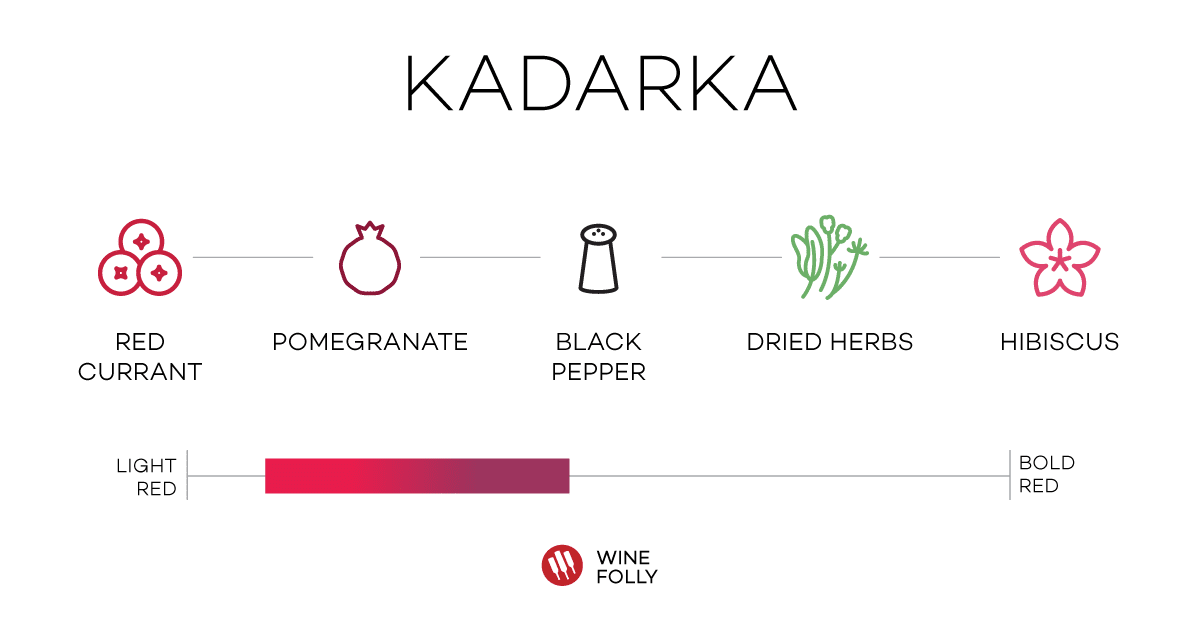
an old local variety
Red Misket
- Cluster: semi-compact to compact with single or double branching, medium size (15.3/9.3cm), cylindric-conical
- Grapes: pleasant musquet taste, sweet, juicy, small (14/14.2mm), deformed when the cluster is compact and almost spherical
- Skin: covered with a thick waxy coating and typical black dots, hard, thick, pink-red with shades of violet
- Sugar content: 18-21%
- Titratable acid: 5.4-6g/dm3
- The best conditions: best grown in windy and hilly regions, resistant to frost
- Yield: medium
- Sour is enhanced when paired well with other varieties
- Wines: good musket taste, straw yellow color, harmonious feeling
- The finish can be somewhat salty, with lingering flavors of dried pineapple or mango.
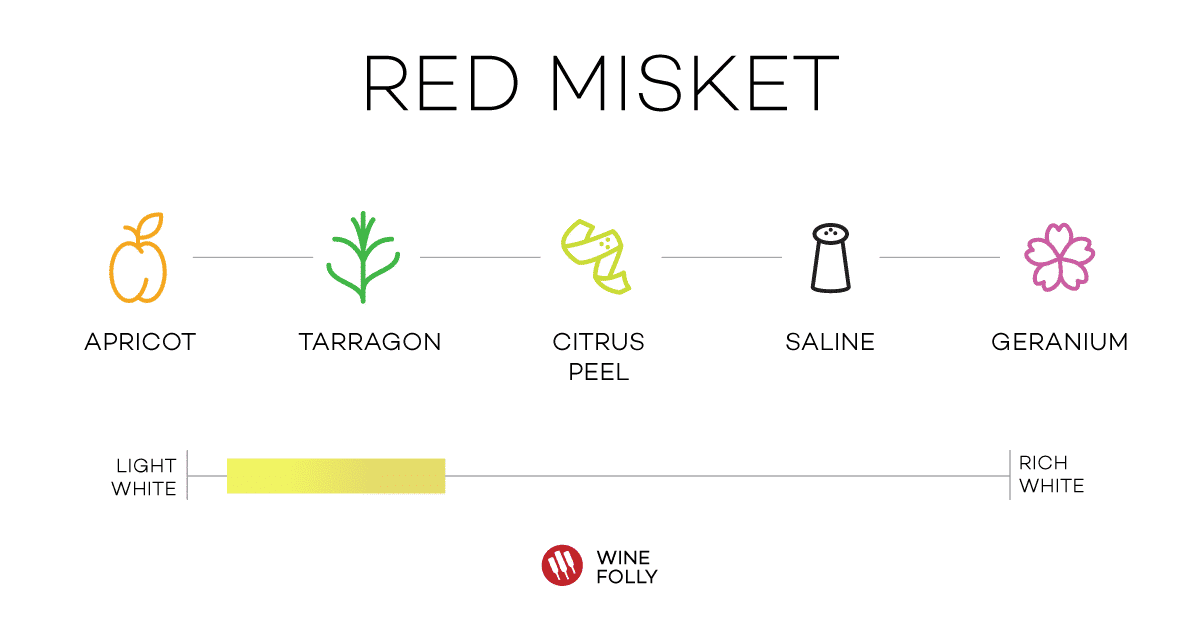
an old local variety
Dimiat
- Cluster: semi-compact, conical, medium size
- Grapes: oval, large, with shades of vanilla, fresh, tasty, juicy
- Skin: yellow-green colour, fragile, thin
- Fast ripening variety, with late aging in the middle of September
- Yield: High
- The best conditions: not resistant to low winter temperatures
- Wines will tickle your taste buds with acidity and flavors similar in style to Aligote, including subtle notes of apple, citrus, and apple blossom.
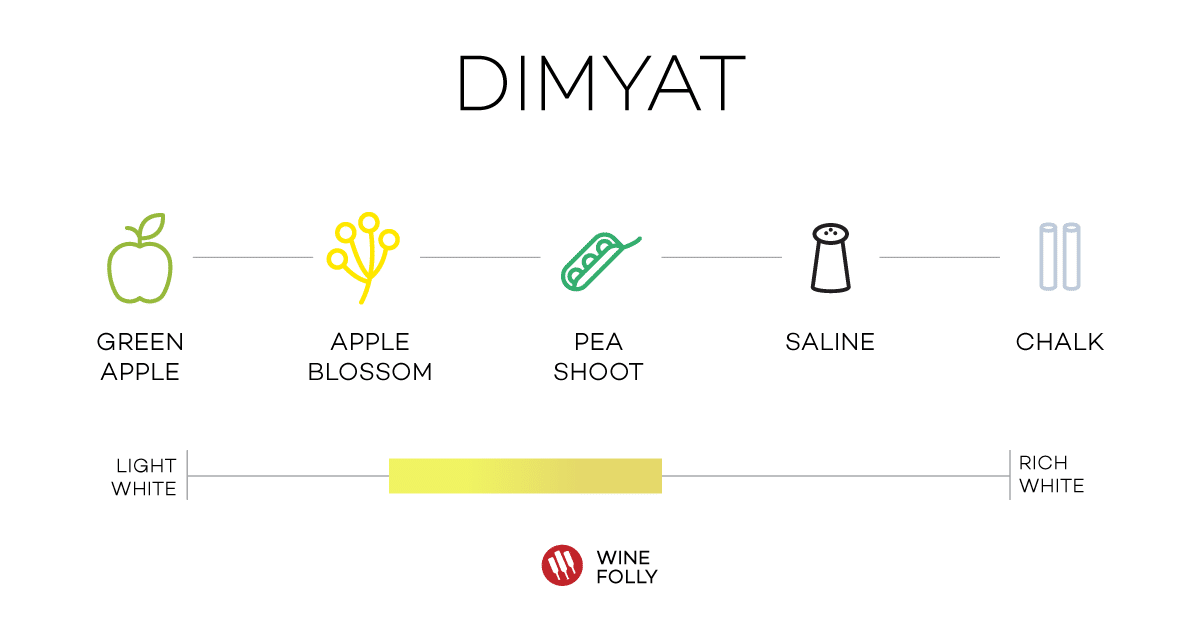
a local grape variety
Tamyanka
- Cluster: medium-sized (120-160 g), cylindrical to cylindrical-conical, semi-compact to compact.
- Grapes: medium, spherical, the meat is juicy, with a harmonious taste and a strong incense aftertaste.
- Skin: thick, rusty yellow or golden yellow with a tan, with characteristic small black dots
- Medium-early ripening variety: first half of September
- Yields: medium
- Sugar content: 20-26%
- Titratable acids: 6 – 8 g/ dm3
- The best conditions: high quality wines come from vineyards above 500 metres above sea level of Southern regions, but the north offers an element of freshness and elegance
- Wines: display layered aromas of ripe fruit, flowers and spices
- Off-dry styles are typical and common. Suitable for obtaining high-quality semi-dry and sweet wines, which are distinguished by a dark golden colour, density and a fine musket-incense aroma.

a local grape variety
Gergana
- Skin: medium-thick, tough, yellow-green, covered with a wax coating that gives it a pearly sheen
- Cluster: medium-sized (257.6 g), conical to cylindrical-conical, semi-compact.
- Grapes: are large (3.7 g), rounded, slightly fleshy, sweet, with a pleasant taste and a slight musket aroma
- The content of sugars in grapes is on average 20.2%, and of acids – 7.3 g/l.
- Sugar content: on average 20.2%, and of acids – 7.3 g/l.
- It is characterized by high fruiting
- ripens in the second half of September
- The variety is relatively resistant to cold
- The resulting wines are clear, with a beautiful light yellow color with a greenish tint, a light fruity aroma, good density, freshness and harmony

The importance of a sense of place
Pour. Share. Inspire.
The wine style is not just one a variety, but belonging to the place of cultivation.
That are wines that have a strong connection to the earth or soil. Wines that are easy to understand and enjoy without the need for elaborate wine knowledge. These wines express the specific terroir or the unique characteristics of the vineyard’s soil.
Bulgaria is a land of diversity and contrasts that encompass river bottoms to rolling hills and flatlands to mountains. Tasting wines in the context with their location will help you understand how the climate and styles of Bulgarian wines are greatly affected by a sense of place. The best part of the experience is that each of these wines comes with its own special story.
Furthermore when any great wine being made, it’s also about grown. When you see his twisted gnarly trunks you start to understand why. Winemakers who focus on “grounded vines” in specific soil aim to produce wines that reflect the natural environment and the sense of place where the grapes are grown.
If you somehow decide “I’m going to visit this place, I want to be there, I want to see it”, you fell in love in that wine style. Come. Sip. Sense.